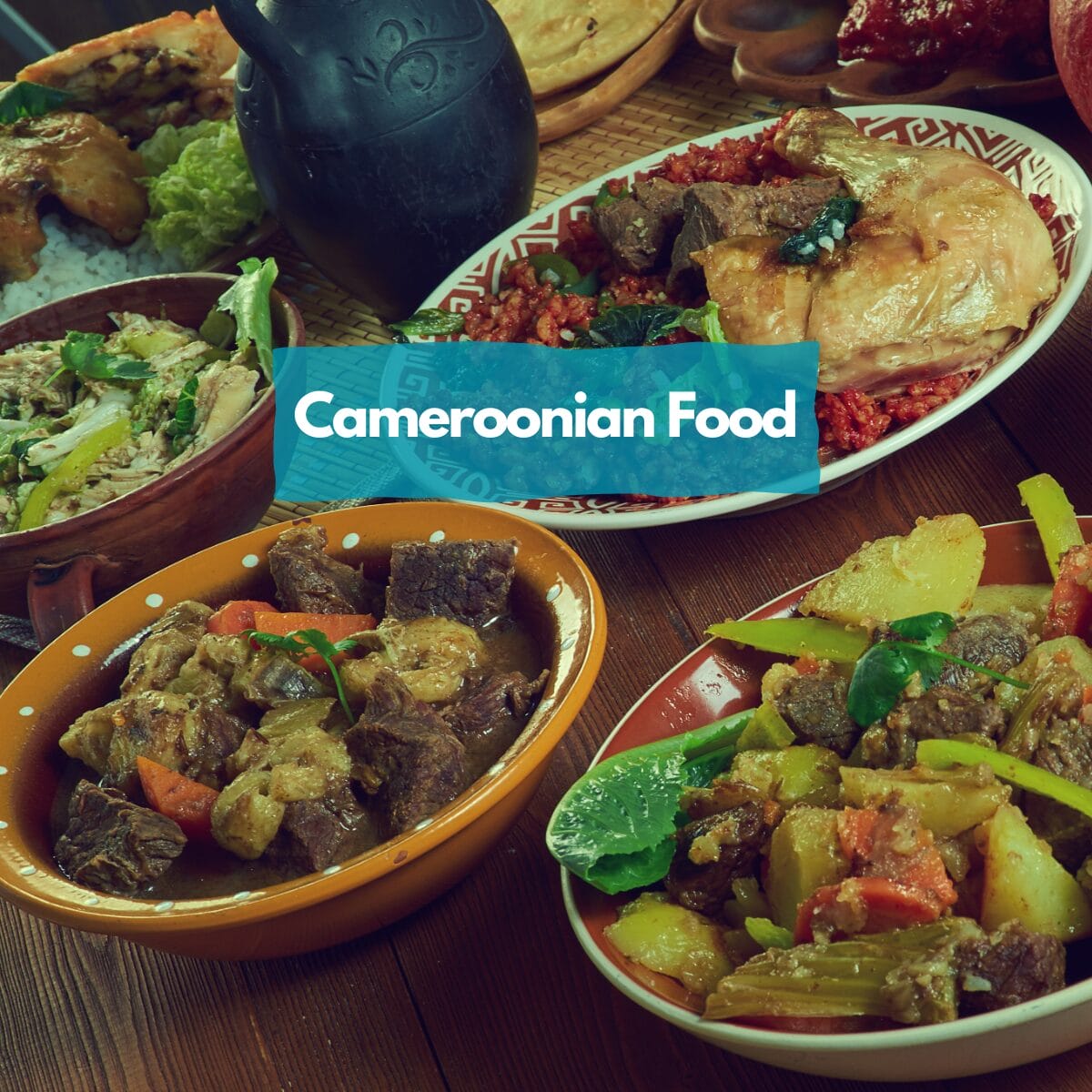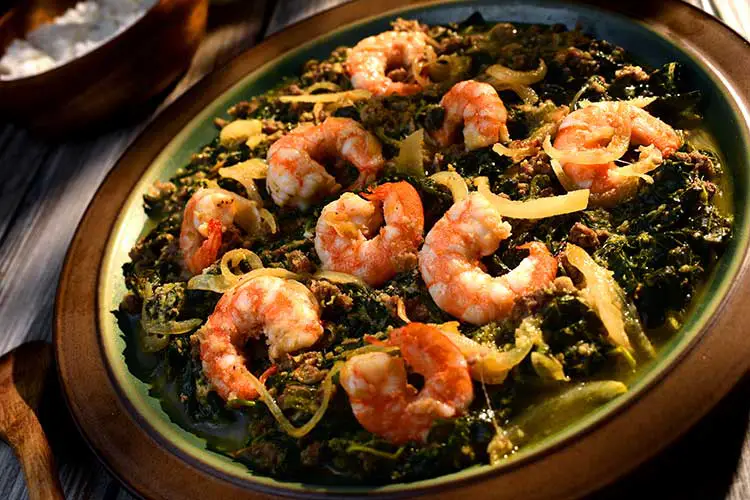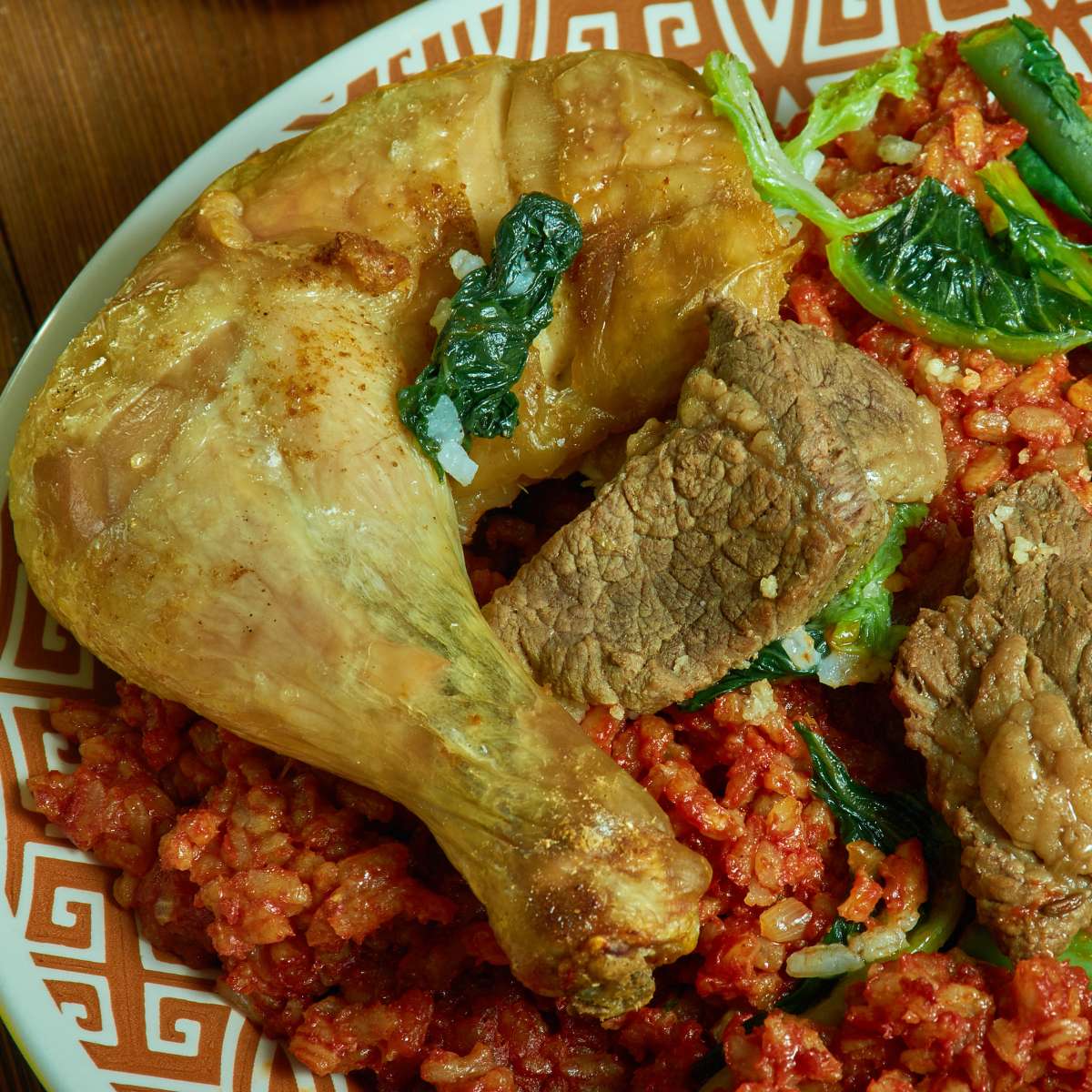Immerse yourself in the diverse and delectable world of Cameroonian food, where over 250 ethnic groups blend their culinary traditions into a rich tapestry of tastes. From the bustling markets to the family tables, Cameroonian cuisine offers a unique blend of flavors that reflect its diverse geography and cultural heritage.
In this article, we’ll delve into a culinary journey that showcases the best of Cameroon’s dishes, from the hearty stews and aromatic spices to the fresh seafood caught from the Atlantic. Whether you’re a seasoned foodie or a curious newcomer, the flavors of Cameroon are sure to captivate your palate.
Essential Components of Cameroonian Food: From Land and Sea
Explore the foundational elements that define Cameroonian cuisine, a delightful blend of land’s bounty and ocean’s harvest. Each dish not only offers a feast for the taste buds but also reflects the vibrant cultural tapestry and rich natural resources of Cameroon.
Seafood Staples: Treasures of the Cameroonian Coast
- Shrimp from Kribi: Known for its sweet taste, shrimp from Kribi is a staple in coastal dishes, often featured in spicy stews and flavorful sautés.
- Crayfish from Limbe: A local delicacy, Limbe’s crayfish bring a burst of flavor to traditional fish stews and sauces, enriching every dish with their robust taste.
- Barracuda from Douala: Celebrated for its firm texture, barracuda is a favorite in Douala, typically grilled or baked to enhance its natural flavors.
Agricultural Anchors: The Roots of Cameroonian Dishes
- Cocoyam: A versatile root vegetable that thickens soups and stews, adding a creamy texture and subtle sweetness.
- Cassava: The base for Fufu, cassava is a cornerstone of Cameroonian cuisine, serving as a filling accompaniment to a variety of dishes.
- Maize: Whether ground into flour for baking or boiled as corn on the cob, maize is a fundamental ingredient that adapts to countless culinary uses.
As you dive into the flavors of Cameroon, you’re engaging with a culinary tradition steeped in history. Each meal is a celebration of the land and sea, offering a window into the country’s generous natural offerings and its people’s culinary ingenuity. Enjoying these staple ingredients is not just about nourishment; it’s a way to connect with the heart and soul of Cameroonian culture.
Cameroonian Food: Traditional Dishes
Dive into the vibrant world of Cameroonian cuisine, where each dish offers a window into the country’s rich cultural heritage. From bustling markets to quiet village cookfires, Cameroon’s culinary scene is a tapestry of flavors, ingredients, and histories that make every meal a celebration of its diverse traditions.
Ndolé – The National Dish
At the heart of Cameroonian cuisine lies Ndolé, often celebrated as the national dish. This Cameroonian peanut stew marries the rich, nutty flavor of ground peanuts with the distinctive taste of bitter Ndole leaves.
Whether simmered with shrimp, beef, or crayfish, Ndolé serves as a delectable showcase of Cameroon’s ability to blend land and sea into a single dish. It’s a staple that captures the essence of the nation’s culinary identity.
Eru
Eru, a hearty vegetable soup, combines finely sliced Gnetum (okok) leaves with waterleaf and an assortment of smoked meats or fish, offering a robust flavor profile that is both nourishing and deeply satisfying. Originating from the Southwest region, Eru has gained popularity across the country, often enjoyed with fufu (a starchy side) for a fulfilling meal.
Koki
Koki turns simple ingredients into a festive treat. Made from pureed black-eyed peas mixed with palm oil and spices, then wrapped and steamed in banana leaves, Koki is a dense, savory cake that’s a favorite at social gatherings and as street food. Its rich texture and flavor make it perfect for any time of day, reflecting Cameroon’s communal dining culture.
Ekwang
Ekwang is a traditional dish crafted from grated cocoyams wrapped in cocoyam leaves, then slowly simmered with palm oil and various meats or fish. This dish is celebrated for its intricate preparation and rich, savory flavors, making it a beloved choice for family gatherings and special occasions.
Poulet DG
Short for Poulet Directeur Général, Poulet DG is a luxurious dish often served to important guests. It combines chicken with fried plantains and a medley of vegetables, all simmered in a flavorful tomato sauce. This dish not only offers a taste of Cameroon’s culinary luxury but also reflects the humor and creativity inherent in Cameroonian cooking.
Cameroonian Food: Regional Delicacies
Foods in Cameroon are more than sustenance—they’re a festival of flavors, a jubilee of joy, and a commemoration of community. Every region has its all-star, but during food celebrations, the table is a mosaic of traditional Cameroonian dishes, each telling a tale of the land’s bounty and the communal ties that bind.
West Cameroon: Khati Khati (Grilled Chicken)
In West Cameroon, Khati Khati stands out as a popular celebratory dish. This grilled chicken is marinated in an aromatic blend of local spices and herbs, offering a smoky and savory flavor that’s both simple and profoundly satisfying.
Northwest: Achu Soup
Achu Soup, originating from the Northwest, is a cornerstone of local celebrations. Made primarily from cocoyams or taro, this soup is enriched with vibrant yellow palm oil and a variety of spices, creating a comforting and rich dish often accompanied by meats or fish.
Littoral: Sopecam (Fish Stew)
Along the Littoral region, Sopecam, a sumptuous fish stew, dominates the culinary scene. Fresh local fish cooked in a tomato and spice broth exemplifies the region’s affinity for seafood, reflecting its coastal geography.
East: Sanga
In the East, Sanga is a cherished dish, especially during festive times. It typically consists of a flavorful combination of ingredients such as plantains, cassava, and various meats, cooked together to create a hearty and satisfying meal.
Cameroonian Food and Its Cultural Significance
Discover the heart and soul of Cameroon through its food, where each dish is not just a meal but an expression of cultural identity and communal values. Cameroonian cuisine is a rich palette of flavors that plays a pivotal role in the nation’s traditions and celebrations.
Born House Planti: Welcoming New Life
Born House Planti is more than a meal; it’s a celebration of new beginnings. Traditionally prepared to celebrate the birth of a child, this dish symbolizes the warmth and joy of welcoming new life into the community. Its comforting flavors bring families together, marking a momentous occasion with the richness of shared culinary heritage.
Jollof Rice: The Heart of Festivities
A centerpiece at Cameroonian festivities, Jollof rice is a vibrant dish that embodies communal joy and prosperity. Each serving is a fiesta of spices and colors, essential at celebrations, big or small. More than just rice, it’s a festive declaration of unity and joy, savored across gatherings as a staple of national pride and collective happiness.
Achu Soup: Symbol of Union
Served at weddings, Achu Soup represents the union of hearts and heritage. This rich, spicy soup is a culinary emblem of matrimonial harmony and cultural reverence, bringing families together under the auspices of shared traditions and flavorful bonds.
Fufu and Eru: Roots of Resilience
In traditional observances, Fufu and Eru stand for endurance and cultural fortitude. These staple dishes are deeply embedded in Cameroon’s cultural fabric, providing sustenance and strength. They are a testament to the enduring spirit of the Cameroonian people, reflecting the country’s resilience through the ages.
Cameroonian Food: Delicacies from the Streets of Douala
As you wander through the bustling streets of Douala, your senses are immediately engulfed by the aromatic tapestry of the city’s vibrant food scene. It’s not just food; it’s a Cameroonian food experience, a culinary journey that promises to linger in your memory long after the last bite.
Accra Banana Fritters
Accra Banana Fritters are a beloved snack throughout Cameroon, especially popular in the lively markets of Douala. Made from ripe bananas and a dough of flour and granulated or powdered sugar, these fritters are deep-fried until golden and crispy. They’re often enjoyed as a quick breakfast or a sweet midday treat, providing a delicious energy boost with a taste of local sweetness.
Puff Puff and Beans
Puff Puff and Beans is a classic combination found on many street corners in Douala. Puff Puff, a light and airy doughnut made from yeast dough, is fried to soft perfection and served with a savory side of cooked black-eyed peas seasoned with spices and sometimes mixed with bits of fish or meat.
This dish is not only filling but also offers a perfect balance of textures and flavors, making it a favorite among both locals and visitors.
Grilled Fish
Grilled fish is a staple at Douala’s street food stalls, reflecting Cameroon’s rich fishing traditions. Fresh fish, often caught from the nearby waters, is marinated in a blend of local herbs and spices before being grilled over an open flame.
This cooking method enhances the fish’s natural flavors, resulting in a smoky, succulent dish that’s usually served with sides like spicy plantain or cassava. Grilled fish offers a delicious insight into Cameroon’s coastal culinary practices, celebrated for its freshness and simplicity.
Cameroonian Spices and Seasonings: A Sensory Journey
Step into the vibrant world of Cameroonian cuisine, a palette of flavors that defines the country’s diverse culinary landscape. From fiery peppers to aromatic spices, discover how these ingredients capture the essence of Cameroon’s rich cultural tapestry.
Cameroon’s Best Pepper and Exotic Seasonings
Central to Cameroonian cooking is the renowned Cameroonian pepper, known for its robust heat and complex taste that adds more than just spice to a dish—it creates a depth of flavor that enhances every meal.
Alongside these peppers, a variety of other spices play crucial roles in traditional recipes, turning everyday cooking into a celebration of flavors:
| Spice | Flavor Profile | Common Uses |
|---|---|---|
| Penja White Pepper | Sharp, Earthy, Slightly Floral | Soups, Stews, Grilled Meats |
| Country Onions | Pungent, Aromatic | Sauces, Marinades |
| Djansang (Njangsa) | Nutty, Mild Bitterness | Stews, Soups |
These spices do more than flavor dishes; they carry cultural stories and reflect the ingenuity of Cameroonian cooks. From the smoky aroma of roasted spices to the pungent kick of fresh herbs, each seasoning adds a unique touch to the cuisine, making every meal a sensory journey.
Culinary Use of Edible Insects and Local Ingredients
In addition to spices, Cameroonian cuisine often includes edible insects, a practice rooted in both tradition and sustainability. High in protein and versatile in cooking, insects like caterpillars, termites, and grasshoppers are not only nutritious but also offer a sustainable alternative to traditional meats.
These insects are commonly prepared in a variety of ways:
- Fried caterpillars seasoned with local spices offer a crispy, flavorful snack.
- Roasted termites, enjoyed either alone or as a protein-rich addition to dishes.
- Stewed grasshoppers in a rich tomato sauce present a hearty, satisfying meal.
By embracing these flavors, you’re not just expanding your culinary horizons. You’re participating in a movement that respects the ingenuity and sustainability inherent in Cameroon’s food practices. So go ahead, be bold—let your senses take a thrilling detour through the heart of Cameroon’s alluring palate.
Conclusion
Cameroonian food is a celebration of the country’s abundant natural resources and its cultural diversity. Each dish, from Ndolé to Koki, not only satisfies the appetite but also connects diners to Cameroon’s rich traditions and stories. As you explore these traditional dishes, you’ll discover a cuisine that is both nourishing and profoundly flavorful.
Continue to explore and appreciate the depth of Cameroonian culinary arts, and let each bite take you closer to the heart of this beautiful country. Remember, every meal is an opportunity to experience the joy and community spirit that is central to Cameroonian culture.
FAQ
What flavors define traditional Cameroonian dishes?
Traditional Cameroonian dishes are characterized by rich, bold flavors often emphasizing a mix of aromatic spices, succulent meats, and fresh vegetables and fruits. You’ll find the use of peanuts in stews like Ndolé, the national dish, while herbs and leafy greens are staples in dishes such as Eru. Coastal regions contribute seafood varieties, adding to the rich tapestry of tastes that define Cameroonian cuisine.
Why is Cameroon referred to as “Africa in Miniature”?
Cameroon’s moniker as “Africa in Miniature” stems from its extraordinary geographic and cultural diversity. It’s a culinary playground featuring flavors from over 250 ethnic groups and landscapes ranging from deserts and savannahs to rainforests. This diversity is mirrored in the wide array of culinary offerings, from the savory spice blends to the sweet tropical fruits and beyond!
What makes Cameroonian food unique compared to other African cuisines?
The diversity of ethnic groups in Cameroon brings a unique blend of flavors and techniques that merge Central and West African culinary traditions.
What is a traditional Cameroonian drink?
Palm wine, a fermented beverage made from the sap of palm trees, is a popular traditional drink often consumed during celebrations.
How are traditional meals typically served in Cameroon?
Meals are often communal, with diners sharing from common plates, reflecting the country’s emphasis on community and family.
Is Cameroonian food typically spicy?
Yes, many Cameroonian dishes are seasoned with a variety of spices and chili peppers, making them quite spicy and flavorful.
What are the staple ingredients in Cameroonian cuisine?
Cameroonian cuisine relies heavily on starches like plantains, cassava, and cocoyam, as well as an array of tropical fruits and vegetables, paired with fish, chicken, or beef.







